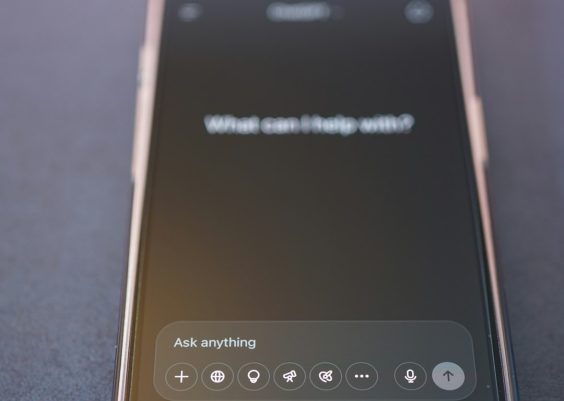In the world of B2B marketing and sales, few tools carry the weight and persuasive power of a well-crafted case study. When done correctly, case studies move past traditional marketing fluff and dive into real-world value. But here’s the challenge: many prospects approach case studies with skepticism. They wonder, “Is this just another polished PR piece?” or “Did this actually happen as described?”
To make your case studies genuinely compelling, trustworthy, and effective, it’s not just about what you include—but how it’s presented. In this article, we’ll explore what makes a case study template believable to prospects, what to avoid, and share templates that not only tell a story but *prove* it.
Why Traditional Case Studies Fall Flat
Most case studies follow a predictable format: Problem, Solution, Results. While straightforward and familiar, this format often lacks depth and emotional resonance. Prospects are looking for more than just performance metrics; they want:
- Authentic storytelling
- Verifiable data
- Named clients and real quotes
- Visuals to support what’s being claimed
- Relatable pain points
When these elements are missing, it’s easier for the reader to mentally file the case study into the “marketing noise” category. That’s exactly what you don’t want.
Elements of a Believable Case Study
Let’s start by focusing on the psychology of trust. What makes a case study *believable*? Here are some proven elements that psychologically reinforce credibility and drive engagement:
- Specificity: Avoid generalizations. Instead of writing “increased productivity,” say “cut manual data entry by 38% in 60 days.”
- Human Quotes: Your audience connects with stories, not statistics alone. Include direct quotes from real customers with names, titles, and images if possible.
- Transparent Metrics: Charts, graphs, and KPIs should be explained clearly and always tied to a business impact.
- Concise Background: Include just enough context about the client to make it relatable, but don’t overdo it.
- Real Imagery or Screenshots: Seeing is believing, especially when showing software interfaces, transformations, or results.

Template 1: The “Before-After-Bridge” Format
This model focuses on transformation. It puts the reader into a “what if this were me?” mindset and builds a bridge from pain point to solution.
Template:
- Client Snapshot: Who they are, industry, team size, core challenge.
- Before: Describe the environment before your solution—challenges, inefficiencies, lost revenue, etc.
- Bridge: How they discovered your company and why they chose your solution over others.
- After: Quantifiable results, qualitative benefits, direct quotes, and visually rich stats.
Why it works: This format builds dramatic tension and provides a satisfying resolution, much like story arcs in film. Prospects read it and can envision themselves walking that same bridge.
Template 2: The “Hero’s Journey”
Modeled after classic storytelling structures, this template casts your client as the hero, not your product. Your tool is the sword they wield to conquer obstacles.
Template:
- The Challenge: The ‘villain’ they were up against—be it inefficiencies, competitors, or an outdated system.
- The Guide: You—helping them navigate options and proposing a customized solution.
- The Transformation: With the help of your solution, the client succeeds gloriously, achieving their goal with clear data to back it up.
- Reflection: Quotes or insights from the customer on what they’d recommend to others facing the same battle.
Why it works: This taps into the emotional and narrative side of decision-making, turning bland numbers into a memorable story.
Template 3: The “Product Deep-Dive”
Some prospects prefer concrete technical details that go deep into your offering. This template focuses on tactical implementation and process.
Template:
- Introduction: Explain the customer’s setup and why they chose your product.
- Integration Process: How installation or onboarding was done, with timeframes and people involved.
- Key Features Used: Break down how each important product feature delivered impact, with supporting metrics and screenshots.
- Results and Usability: Benefit realization, impact on daily operations, ongoing customer success.
Why it works: It speaks directly to engineers, IT managers, and operations-focused buyers who care about the “how” just as much as the “what.”

Tips to Instantly Boost Credibility
Here’s what you can incorporate into any of the templates to increase trust and relatability:
- Use Quotes Liberally: Sprinkle direct, unedited customer quotes throughout. This humanizes the experience.
- Add Faces: Including a headshot of the person quoted helps with social proof and increases relatability.
- Mention Brands and Roles: “Alex Jordan, Head of IT at Shell Corp” reads way better than “a tech manager.”
- Use Side-by-Side Before/After Visuals: Use images and screenshots to literally show the difference.
Mistakes to Avoid When Creating Case Studies
- Using Vague Language: Don’t say “significant improvement.” Quantify it.
- Over-polishing: Over-produced designs or language can feel inauthentic and reduce trust.
- Skipping Context: If your target audience can’t relate to the client in the case study, they’ll tune out. Set the scene with enough background.
- Ignoring Variety: Don’t use only Fortune 500 clients. Mix small to mid-sized businesses to match your diverse audience.
Choosing the Right Case Study Format
Each template we’ve discussed works best under particular circumstances. Here’s a quick guide on when to use each one:
- Before-After-Bridge: Great for early-stage leads considering change.
- Hero’s Journey: Ideal for webinars, sales presentations, and content marketing campaigns.
- Product Deep-Dive: Best for technical decision-makers and bottom-funnel content.
Conclusion: Make Your Case Studies Trust Engines
Credibility is currency. The more believable your case studies, the more confidently prospects move through your pipeline. But achieving this doesn’t require bigger budgets or fancier visuals. It comes down to *authenticity*, *specificity*, and *storytelling*. With the right template and honest customer narratives, you’ll transform a common marketing tool into a conversion-driving asset.
If your current case studies aren’t performing as expected, it might not be the format. It could be the *trust factor* embedded in your content. With these templates and principles, you’ll create case studies that don’t just persuade—
they prove.




